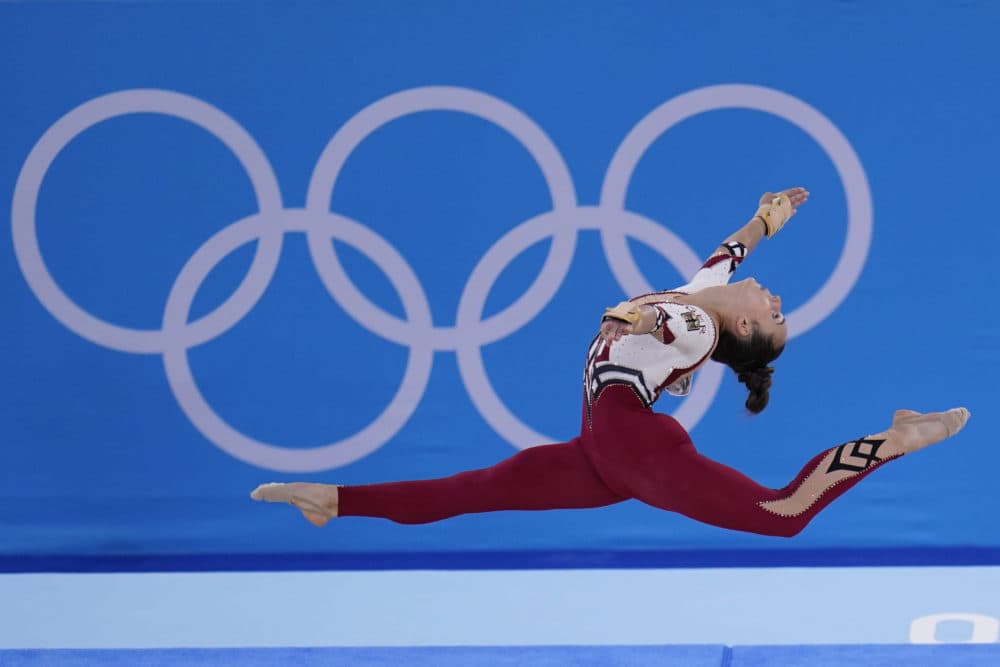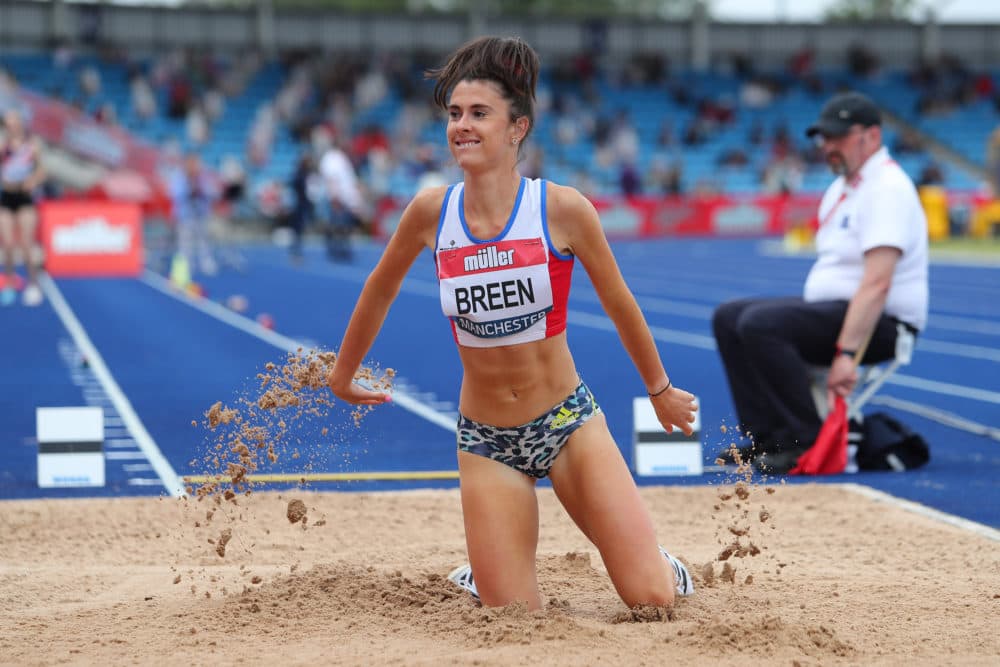Advertisement
Years After #MeToo Movement, Women Athletes Are Still Fighting Sexualization
Resume
At the outset of the Tokyo Olympics, the head of Olympic broadcasting services announced that journalists' news feeds would not be highlighting sexualized images of female athletes, focusing on "sports appeal, not sex appeal." But are they?
The comments came after the German women's gymnastics team announced that some of its athletes would compete in full-length unitards instead of high-cut bodysuits. Among the reasons, according to one gymnast, was to be "a role model for young gymnasts who don't feel very safe in every situation."
Germany's decision came less than a month after Norway's beach handball team was fined €1,500 for wearing shorts instead of bikini bottoms. Officials called the women "inappropriate."
Akilah Carter-Francique, executive director of the Institute for the Study of Sport, Society and Social Change at San Jose State University, has been vocal on the topic of the sexualization of women in sports. She says she’s proud of the German gymnasts for their decision.
“I was overjoyed just to hear them speak up and advocate for themselves,” she says, “and say, you know, ‘This is what we prefer. We're still going to perform to the best of our ability, but we need to also feel comfortable in our own skin and in our own uniforms.’ ”
Forcing female athletes to wear revealing uniforms devalues their voices and humanity, Carter-Francique says. And in gymnastics, for example, the sport serves as a safe space for young teenage athletes to express themselves and come into womanhood.
Gymnastics has been plagued by multiple sexual abuse scandals including convicted sex offender Larry Nassar, who served as team doctor for the women's gymnastics team for 18 years and molested hundreds of young gymnasts. The Olympics need to both empower and protect young women in sports, she says.
The updated International Olympic Committee guidelines prohibit close-up photos of athletes’ body parts in order to respect their integrity.
But beyond the games, Paralympian Olivia Breen made headlines after saying an official told her that her uniform was “too short” and “inappropriate” at the English Championships. And the French Tennis Federation objected to the full-body catsuit Serena Williams wore at the French Open in 2018.

People need to look at these issues from a systemic perspective that includes the patriarchy, gender roles and what femininity means, Carter-Francique says. These practices mirror what’s happening in society outside of sports.
“The Olympics has an opportunity to disrupt some of these social norms, these ideological beliefs about how women need to demonstrate their femininity, how they need to showcase themselves in order to be of value,” she says, “and move beyond this notion of objectifying our young women, our girls, into believing that their value is much more than their body, that it's their mind, their athleticism, their talent, their skill set.”
Many analysts have said that dress codes in sports have been historically dictated by money and commercial interests. And the rules are made mostly by men.
Both international and national Olympic committees are often dominated by men, Carter-Francique says. Conversations around race, religion and gender often don’t include a “voice of advocacy or allyship” because of this, she says.
Part of the solution is bringing athletes onto these governing boards, she says.
Carter-Francique competed as a hurdler and long jumper on the track team at the University of Houston. She preferred to wear outfits that made her feel secure in certain places to compete in these dynamic events.
The school worked with different brands on uniforms, she says, and some were more revealing than others. At one point, the team had to advocate for uniforms that made them feel more comfortable.
Athletes need to be involved in conversations about uniforms because their comfort and ability to perform should come first, she says.
“Yes, we do want something that we can represent,” she says. “But we also want something that speaks to functionality and doesn't draw attention to other aspects of who we are and places in that space of sexualization or objectification.”
Female athletes are forced to choose in some cases between wearing what they're told or risk penalties or disqualifications. These rules discourage women from participating in sports at all, Carter-Francique says.
“Seeing these amazing athletes of different genders, sexual orientation, religious, ethnic nation-states represent themselves is so important on this global stage,” she says. “And to have a uniform serve as a barrier to participation is very problematic.”
Karyn Miller-Medzon produced and edited this interview for broadcast with Tinku Ray. Allison Hagan adapted it for the web.
This segment aired on August 2, 2021.

